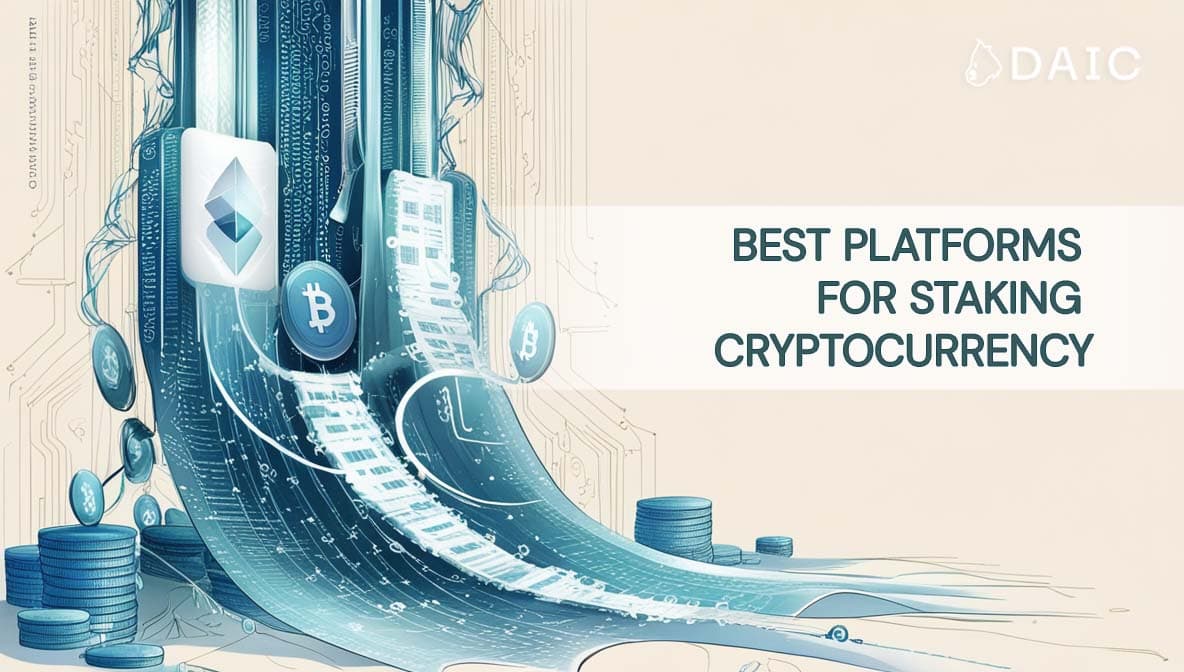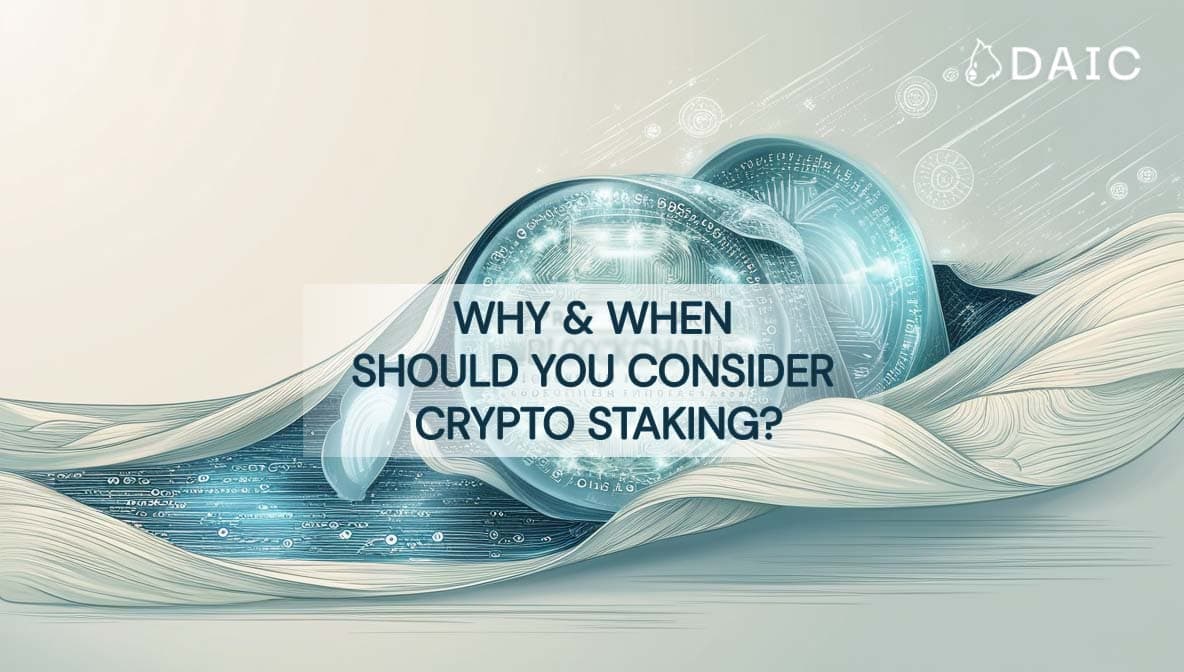Entering into the world of crypto staking can be quite exciting and daunting at the same time. It is pretty important to create a very strong foundation of basic concepts so that you can go ahead with confidence. This introduction will help to answer some of the most frequently asked questions on staking with an aim of shedding light on this process and its advantages.
Key Takeaways
- Earn Passive Income: Staking lets you earn rewards on your crypto.
- Support the Network: Contribute to the security and decentralization of the blockchain.
- Choose Wisely: Select the right cryptocurrency and platform for staking.
- Understand the Risks: Be aware of market volatility and potential penalties.
- Do Your Research: Thoroughly research before staking your crypto.
What is cryptocurrency staking?
Staking is the process of holding cryptocurrencies for serving the functioning of a blockchain network and contributing to its security. In return, participants earn a part of the revenues as a reward.
How does staking work?
In staking, you delegate coins in the network. The blockchain selects random stakeholders (validator) who validate transactions and add blocks so that the network functions efficiently and with accuracy.
Find out the best strategy how to choose your validator in our blog post: “How to Choose the Right Validator for Staking”.
What are staking rewards?
Staking Rewards are the incentives provided to participants for their contribution. Most of the time, these payouts are distributed in the same cryptocurrency staked as a reward for participating to keep the network up and running.
Which coins have staking?
Staking is only possible with cryptocurrencies that implement the Proof of Stake consensus mechanism and its variations.
What are the benefits of staking?
Staking is a process through which participants can passively earn on their holdings, simultaneously contributing to the security and efficiency of the blockchain network. In addition, staking decentralizes the network by incentivizing more users into its governance.
What are the risks associated with staking?
The risks of staking include the penalties (slashing in case of validator misbehavior) that can result in the potential loss of funds, volatility in the prices of the staked assets, and finally, lock-up periods that restrict access to your funds during market volatility.
Read more about the risks of staking in our article Staking: “10 Ways How You Сan Lose Crypto and How to Avoid Them”.
Can Anyone Stake Crypto?
While generally available, staking sometimes depends on meeting minimum requirements either on the blockchain or staking pool level. Operation of a validator node usually requires substantial initial investment and often requires technical expertise too.
Is staking safe?
Staking is mostly safe, but not devoid of risks. Be wary of market volatility, stake only what you can afford to lose, use reputable networks and validators, and keep your coins in a secure wallet.
What should I consider when choosing a cryptocurrency for staking?
Before purchasing crypto asset for staking, you need to consider its stability, reward potential, the reputation of the development team, and potential risks like slashing and lock-up periods.
What are the most popular cryptocurrencies for staking?
Popular staking cryptocurrencies include but are not limited to Ethereum (ETH), SUI, Cosmos (ATOM), Akash (AKT) and other.
How to start staking?
To start staking, you need to buy a cryptocurrency that supports staking. Then you will need to create a compatible crypto wallet and select either a staking platform or pool. Most cryptocurrency exchanges offer hassle-free staking options.
Learn more with our article Beginner's Guide to Staking Cryptocurrency: Everything You Need to Know.
What is APR?
APR stands for Annual Percentage Rate and signifies the approximate annual percentage return from staking your assets. Note above all that APR does not account for compounding, while APY does. Here is more about Common Staking Terminology: A Glossary for Beginners.
How are staking rewards calculated?
The amount of a staking reward varies from network to network. It generally depends on several factors such as total amount staked, size of individual stake, provider APR and network's inflation rules.
How to calculate potential earnings from staking?
There are many tools for calculating staking rewards. For example, the Staking Rewards calculator allows you to estimate your profit based on the selected cryptocurrency, the amount of your stake and the APR of the provider.
When will I receive my staking rewards?
Reward distribution frequency is dependent on the network. This may be weekly, once every two weeks, or once a month. Most platforms usually allow automatic reinvestment of rewards. However, most users always have the right to opt out of this feature to receive rewards immediately.
Can I access my funds while staking?
In traditional staking, staked funds are only available after a lock-up period, during which no rewards accrue. If you want to have access to your assets and still participate in staking, you should consider Liquid Staking.
How often to review staking strategy?
Rebalance your staking strategy on a regular basis. For instance, quarterly, following any sharp market fluctuations, or updates coming from your platform.
How to maximize staking rewards?
To maximize staking rewards, consider diversifying your portfolio by staking multiple cryptocurrencies, reinvesting your rewards, and choosing coins with high annual percentage yields (APY) and strong fundamentals.
How to protect staked assets from hacking?
Use hardware wallets whenever possible, select platforms that boast the most stringent security measures, and allow two-factor authentication to better protect your assets.
Are there specific regulations and tax implications for staking rewards?
Yes, in most countries, cryptocurrency, as well as making a profit on investments, are regulated at the legislative level. Depending on your jurisdiction, there may be tax obligations.
Conclusion
Staking in cryptocurrency presents an interesting avenue through which crypto enthusiasts can earn passively, taking an active part in the support of blockchain networks they believe in. Like all investments, staking is a balancing act between its potential rewards and inherent risks. By carefully researching the many cryptocurrencies available, selecting secure platforms, and keeping your finger on the pulse of the constantly evolving crypto landscape, you will be able to unlock the true potential of staking and significantly enhance your crypto journey.
The mantra remains to start with small investments, doing great research, and never putting more at risk than you can afford to lose. It would, in turn, make staking a rather enriching process - not just for an investor, but also for the larger blockchain ecosystem.
The information provided by DAIC, including but not limited to research, analysis, data, or other content, is offered solely for informational purposes and does not constitute investment advice, financial advice, trading advice, or any other type of advice. DAIC does not recommend the purchase, sale, or holding of any cryptocurrency or other investment.


